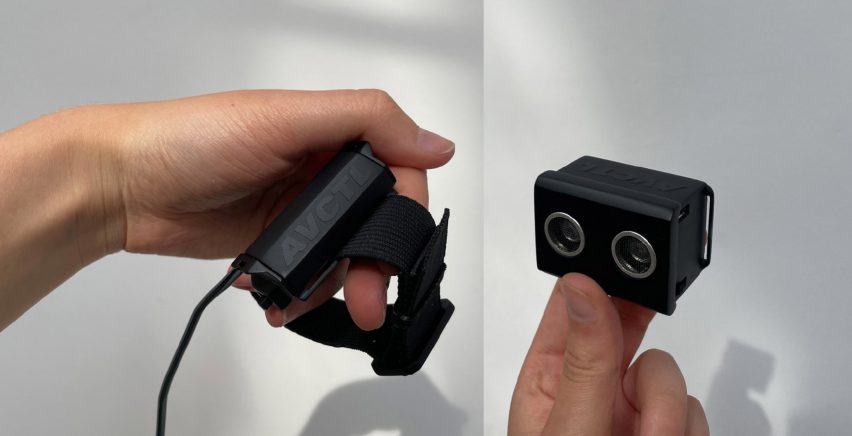
Ten industrial design and technology projects from students at Brunel University
Dezeen School Shows: an app designed to improve productivity and a recyclable Covid-19 test kit are included in Dezeen's latest school show by students studying industrial design and technology at Brunel University.
Also included is a product created to improve the spatial awareness of deaf cyclists, and a low-cost product for theatre directors that enables accurate synchronisation between performers' actions and audiovisual changes.
Brunel University
Institution: Brunel University
School: Brunel Design School
Course: Industrial Design and Technology BA
Tutor: Steve McGonigal
School Statement:
"The Industrial Design and Technology programme at Brunel University London aims to produce graduates who are creative, curious, ethical and proficient.
"Throughout their journey at the Brunel Design School, they become empathetic designers who weave creative thinking with technology, confident in framing problems and defining design opportunities.
"They are encouraged to iteratively explore solutions to current and future challenges and develop prototypes to both communicate their vision and prove the practical design principles.
"Professional practice placements and industry engagement in the design studios also help prepare our students for future employment across a wide range of design industries and product markets.
"The following projects aim to address real-world problems by integrating creative, human-centred and innovation-focused skills together with the application of physical and digital technologies. We hope you enjoy browsing through this work produced by our talented students."
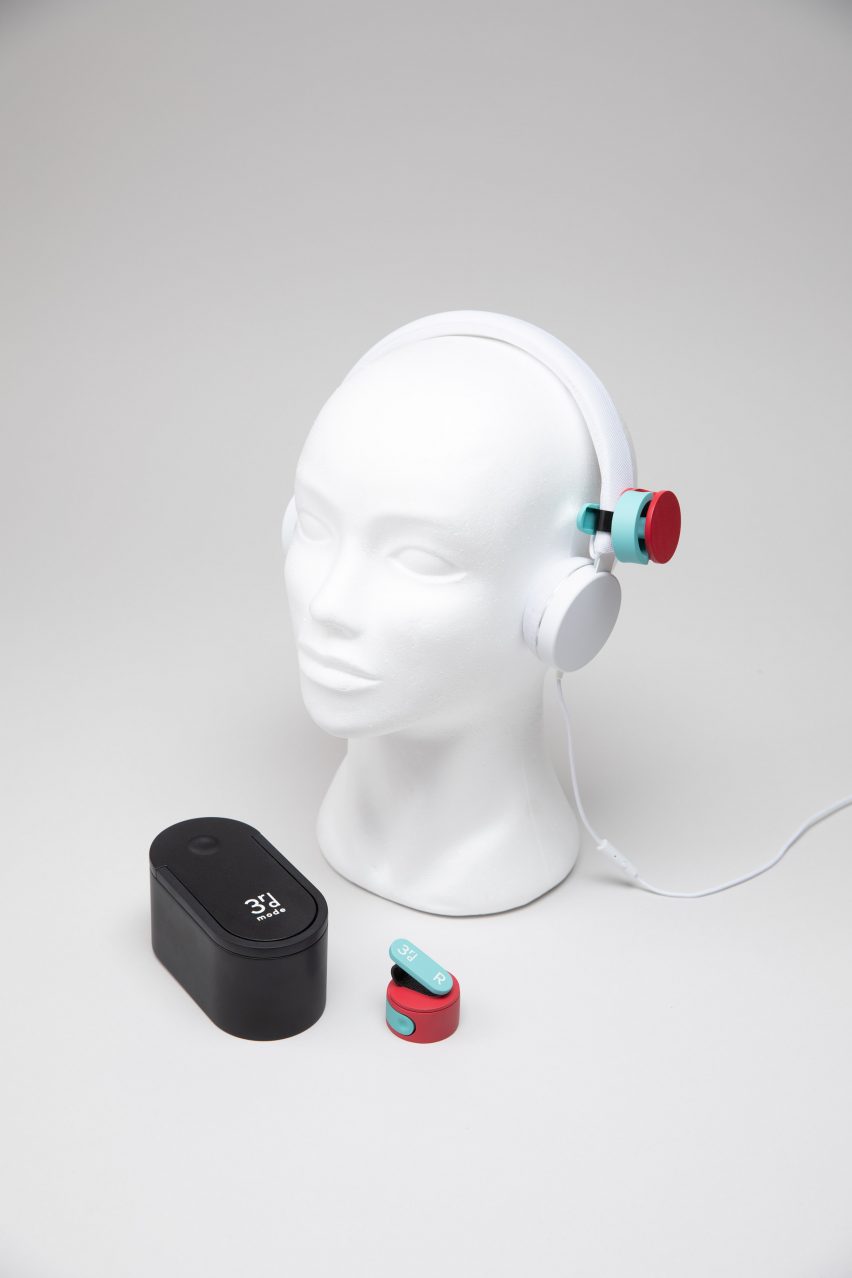
3rd mode by Kirsty Patterson
"3rd mode is an availability status indicator, which aims to maintain positive relationships between colleagues in coworking spaces. Coworking offices are rising in popularity due to their flexibility and affordability compared to long-term contracts. However, they can be noisy or distracting.
"To remedy this, workers wear headphones. However, this creates a 'fourth wall' between the worker and their colleagues and a grey area forms where the status of one's availability is hard to decipher.
"This uncertainty causes difficulty for parties involved as colleagues can become anxious to interrupt them or the worker can react badly to the disruption. This scenario is where 3rd mode intervenes.
"With a simple slot mechanism, the user can slide between communicating that they are open to conversation or closed off to interaction.
"Fun, contrasting colours and physical differences between the modes make the person's working status evident to those around. The user would purchase the product to get a personalised pair, or the employer would provide them."
Student: Kirsty Patterson
Course: Industrial Design and Technology BA
Email: kirsty.eveline[at]gmail.com
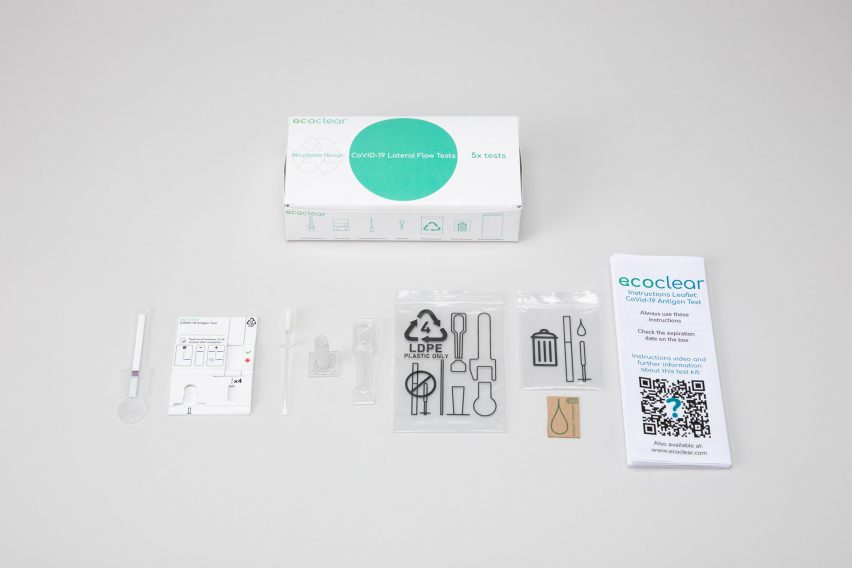
EcoClear by Gabriel Britton
"EcoClear is a sustainably designed, recyclable Covid-19 lateral flow test kit, using only bio-based plastic and card, which also incorporates various human factors improvements.
"Covid-19 lateral flow test kits have been critical in combatting the spread of the virus. However, throughout the pandemic, and with the tests now paid-for, their designs have remained wasteful.
"The two billion provided in the UK have created enough plastic waste to fill at least 19 Olympic swimming pools. EcoClear not only addresses the waste issue but also makes sustainability improvements across its life cycle.
"Only two materials are used: a bio-based recyclable plastic and a card. The design enables all individual component packaging to be removed. Compared to the most widely-used kits, the design achieves an estimated 20 per cent weight reduction and a 70 per cent reduction in CO2 and energy use.
"EcoClear envisions what a more sustainable and user-friendly test could look like."
Student: Gabriel Britton
Course: Industrial Design and Technology BA
Email: gabrielbritton11[at]yahoo.com
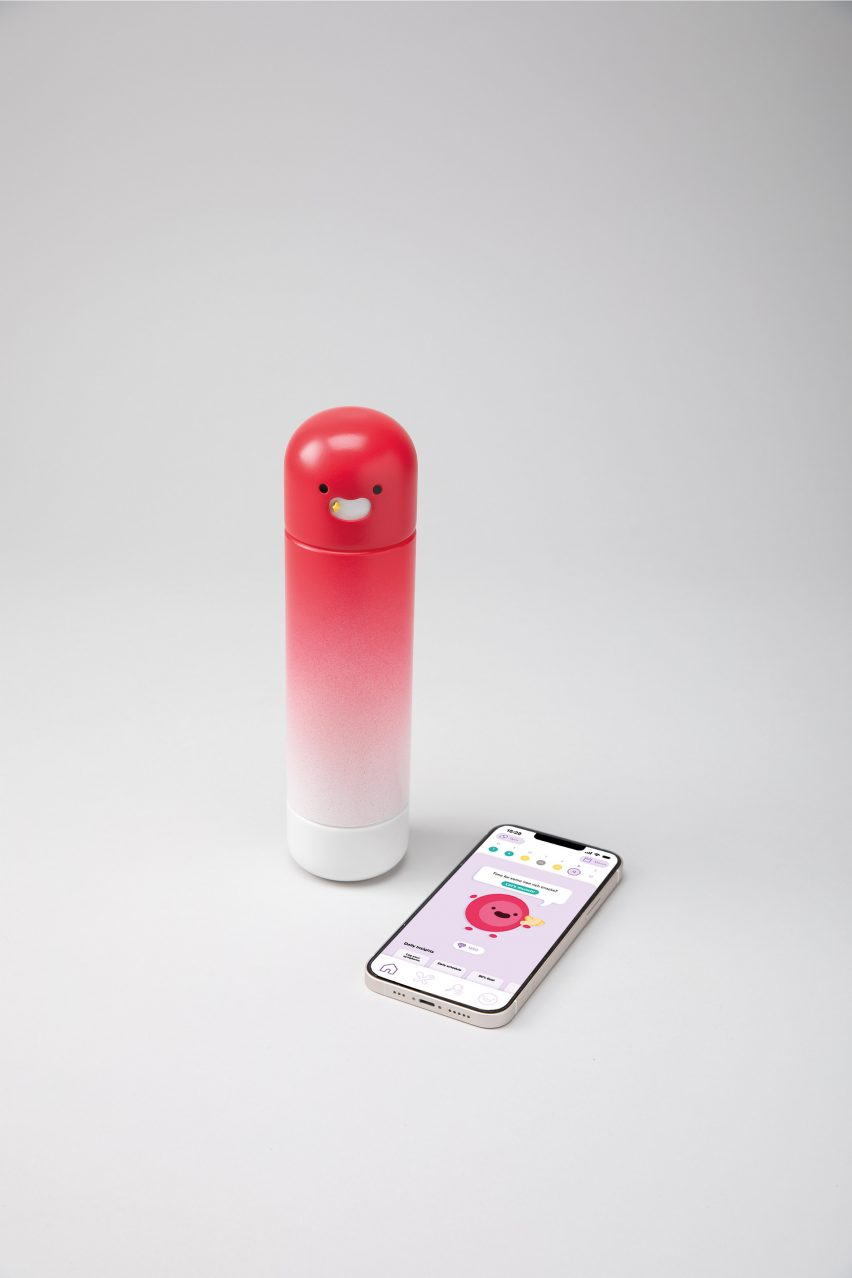
MyHemo by Adeline Leon
"MyHemo motivates women with iron deficiency to adhere to their medical regime through managing their iron intake and encouraging a better dietary lifestyle.
"The World Health Organisation states that iron deficiency is the top nutritional disorder in the world; 3.5 billion people suffer from a lack of iron, 33 per cent being young, menstruating women.
"Iron deficiency, if unaddressed, leads to anaemia which can have serious, life-threatening consequences. However, 50 per cent of the medicated population are non-adherent to their regime due to forgetfulness, a lack of awareness, organisation, support, and more.
"MyHemo is a smart health management system that aims to overcome non-adherence. The app encourages tablet consumption and an iron-rich diet by utilising gamification throughout.
"Features include progress trackers, a community page, schedule planning, and data visualisation, which are key in assisting the user on their journey.
"The modular water bottle provides freedom and flexibility by containing tablets and iron-rich snacks for on-the-go convenience. This system alleviates symptoms and reduces redevelopment risks."
Student: Adeline Leon
Course: Industrial Design and Technology BA
Email: adelineleon305[at]gmail.com
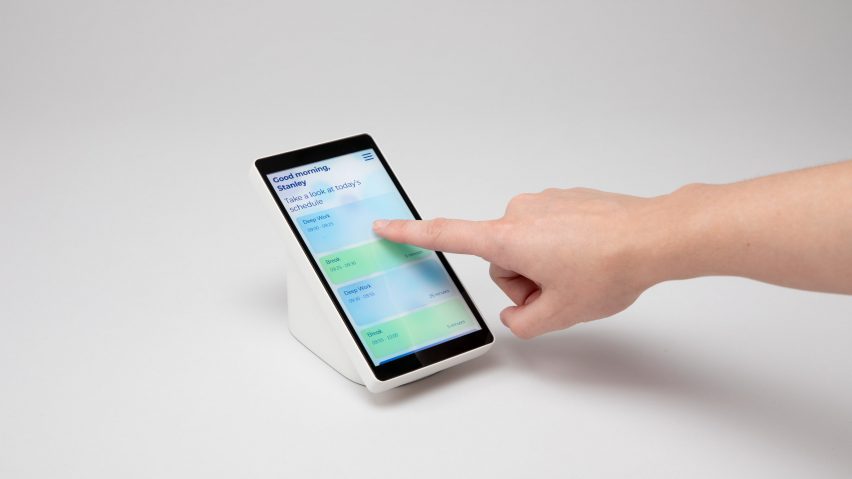
SHŪCHŪ by Stanley Binns
"SHŪCHŪ interprets the user's digital calendars, scheduling deep work and break sessions throughout their day, while nudging them to be more productive. Research has shown that we are only productive for a total of two hours 53 minutes in an eight-hour workday, with the remaining time lost through procrastination and distractions.
"With the recent increase in the uptake of hybrid working models, remaining productive in different working environments, whether it be the home or the office, can be a struggle for us all. SHŪCHŪ wirelessly connects to a computer, displaying events from the user's digital calendar and recognising gaps in their schedule.
"The device fills these gaps with deep work and break sessions, based on the productivity-improving Pomodoro method. The display automatically changes to a visual countdown screen that nudges the user to engage themselves in deep work, ultimately facilitating improved productivity.
"The product integrates perfectly into a work-from-home or office desk space but can also be taken and used on the go, for non-stop productivity."
Student: Stanley Binns
Course: Industrial Design and Technology BA
Email: stanleybinns[at]googlemail.com
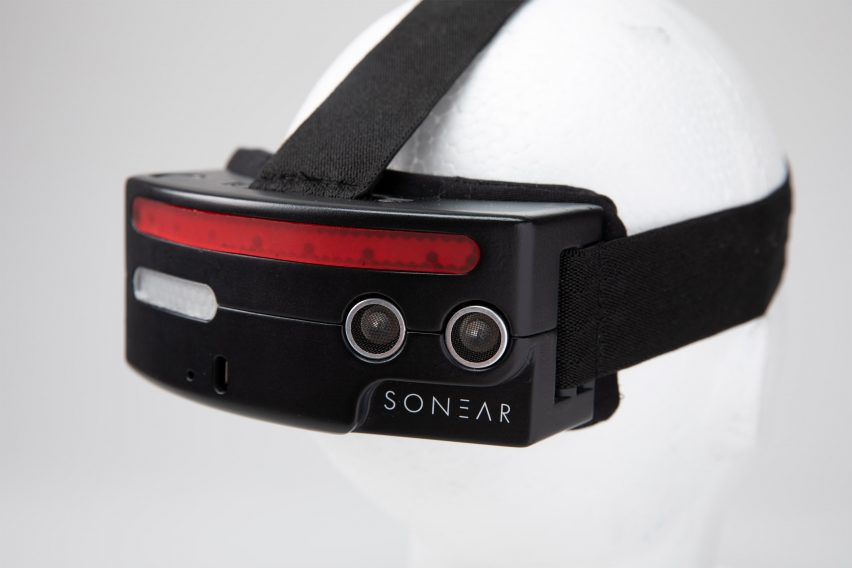
SONEAR by Divine Okoroji
"SONEAR is a product designed to improve the spatial awareness of deaf cyclists in the UK through haptic technology. Cycling has become a growing form of transportation ever since the outbreak of Covid-19. It is a common skill that requires the ability of sensory perception and voluntary movement.
"However, the trait is not shared by all members of society, as those who are hard of hearing lack the critical sensory skill to hear whilst cycling. Research shows that deafness accounts for 68 per cent of increases in misperception on the road, the leading cause of almost 70,000 road accidents per year.
"SONEAR is designed to give deaf cyclists the ability to sense whenever a car is in their proximity. This is achieved through SONEAR's adaption of haptic feedback technology, using ultrasonic waves to calculate the distance, positioning, and speed of a nearby vehicle.
"Calculation takes no more 0.03 seconds to execute and once executed, integrated LRAs are used to produce rates of vibrational feedback to inform the user. The vibrations can increase in frequency and intensity the closer a car gets to the cyclist."
Student: Divine Okoroji
Course: Industrial Design and Technology BA
Email: dkokoroji[at]gmail.com
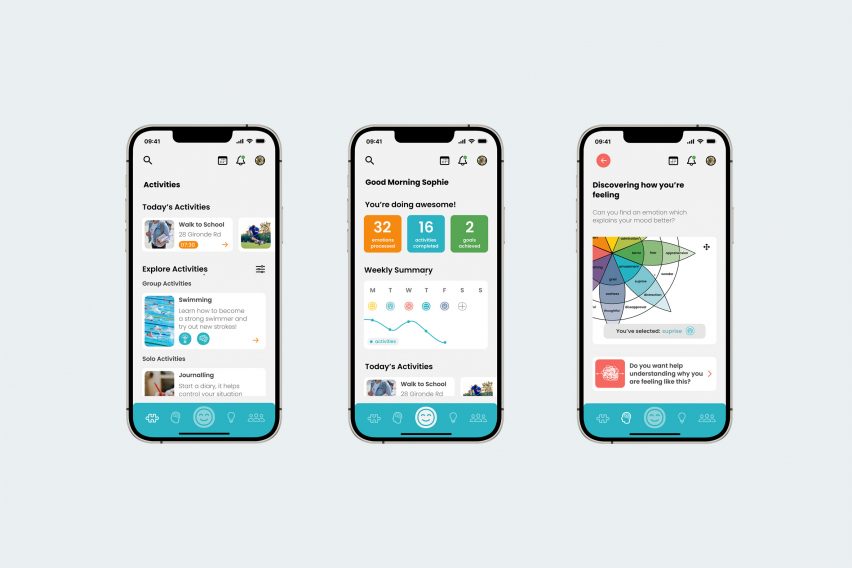
Bounce by Sophie Wilson
"Bounce is an app-based service that aims to support teenagers who have experienced family separation and guide them toward improving their mental health.
"Millions of teenagers experience family separations every year. These circumstances can leave teenagers emotionally scarred with potentially negative implications later in life.
"Bounce aims to provide an educational, interactive, instantly accessible, and personalised support system. Through social prescribing, Bounce's link-workers will assess teenagers' needs and refer them to local non-clinical activities that assist in improving their well-being and self-confidence.
"Using Plutchik's wheel of emotion, teenagers can identify their emotions and follow a process that allows them to untangle their feelings and take action towards resolving them while increasing emotional intelligence.
"An online community allows teenagers to share experiences, support one another, and destigmatize family separation, and the library enables teenagers to understand their current circumstances."
Student: Sophie Wilson
Course: Industrial Design and Technology BA
Email: sophie.wilson1[at]gmail.com
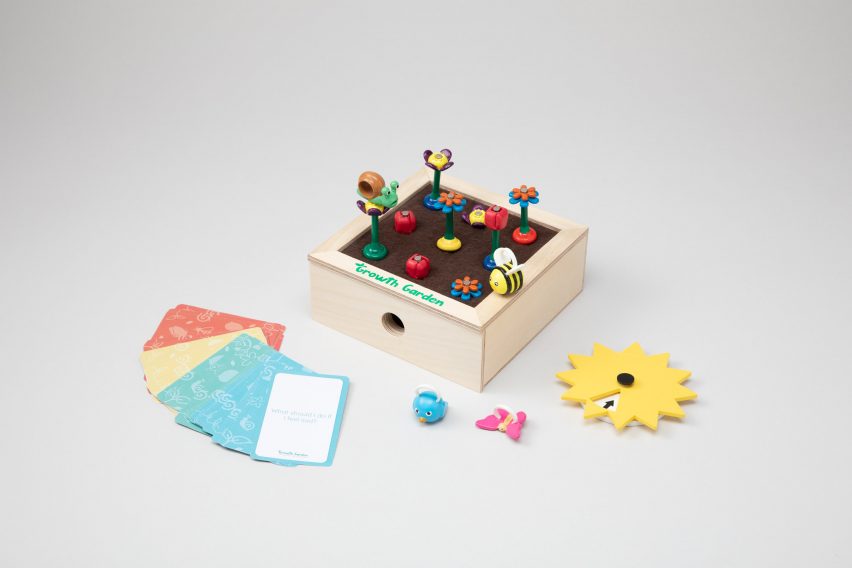
Growth Garden by Sophie Lazenby
"The Growth Garden is a play therapy game aimed at supporting and facilitating conversations about loss, change and other difficult topics.
"On average, one in five children will experience the loss of someone close to them by age 18. Children can be exposed to many forms of loss and change, such as the death of a loved one, the loss of a pet, or other family changes like divorce.
"More recently, the Covid-19 pandemic has presented a whole new set of changes. Generally, the thoughts and feelings of children during difficult times are overlooked. Without intervention and processing of traumatic events during childhood, this can lead to developmental disorders in later life and other mental health problems such as stress sensitivity, anxiety and depression.
"The Growth Garden game provides an engaging distraction activity and conversation prompt for parents to talk to their children and help the child communicate how they are feeling in a way they understand most, through play."
Student: Sophie Lazenby
Course: Industrial Design and Technology BA
Email: sophielazenby[at]btinternet.com
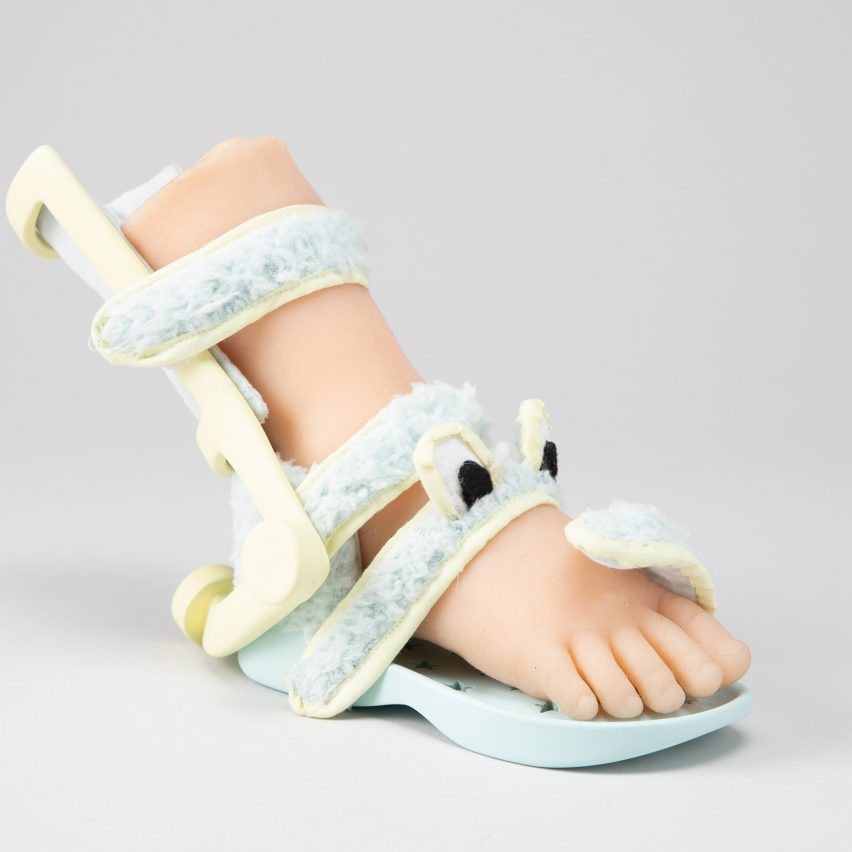
Smile Brace by Nazifa Begum
"The Smile Brace is designed to assist clubfoot patients become more compliant with their brace use by improving the overall comfort and experience, thus decreasing recurrence rates. Clubfoot is a birth defect in which a foetus's feet or foot are turned upwards and directed inwards.
"This occurs in 1 in 1,000 births in the UK. While the treatment method has a 95 per cent success rate, there is still a 37 to 47 per cent recurrence rate. This is primarily due to noncompliance with braces. To maintain the shape of the feet after the casting phase, a brace is worn up to the age of four or five and for up to 14 hours per day.
"The Smile Brace was designed to promote brace adherence by improving the overall visual style and moving away from the appearance of a medical device, taking on a slipper-style design inspired by the aesthetic of being indoors.
"This also ensures that the patient experiences maximum comfort whilst wearing the brace including elements of breathability and adjustability. An abduction dorsiflex mechanism was integrated into the design to maintain the correction of clubfoot."
Student: Nazifa Begum
Course: Industrial Design and Technology BA
Email: nazifabegum00[at]gmail.com

Mina by Oscar Norman
"Mina is a discreet, user-friendly device that allows users to reduce their migraine frequency and severity safely by themselves without medications. Frequent migraines are severely disabling for up to 80 per cent of sufferers.
"Most sufferers develop Medication Overuse Headache (MOH) from taking migraine medications.
"They need effective non-pharmaceutical treatments to get relief without causing more pain. Mina is a personal nerve stimulation device that reduces migraine frequency and intensity without medications or harsh side effects. Designed to be efficient, portable, and discreet, Mina lets people treat their migraines easily, wherever they occur.
"Mina modulates activity in the brain regions responsible for causing migraines by stimulating the Auricular branch of the Vagus Nerve with small electrical pulses.
"The stimulation is delivered via a comfortable and efficient wearable earpiece that is wirelessly controlled by the charging case. The device synchronises treatment data with its companion headache diary app for migraine care that simplifies monitoring for both patients and healthcare providers."
Student: Oscar Norman
Course: Industrial Design and Technology BA
Email: oscarbnorman[at]gmail.com

AVCTL – AudioVisual Control by Augustė Žukaitė
"This is a simplistic and low-cost product for theatre directors and audiovisual (AV) designers that enables accurate synchronization between performers' actions and audiovisual changes in live performances.
"The products make it possible for actors to change the audiovisuals by themselves, whilst on stage, eg play a shooting sound right at the second it is acted.
"The product is easy to set up, control, and affordable for low-budget projects. Devices are set up through software that can be connected to other software commonly used in theatres. During live shows, the devices are overlooked from the control room."
Student: Augustė Žukaitė
Course: Industrial Design and Technology BA
Email: augustezukaitee[at]gmail.com
Partnership content
This school show is a partnership between Dezeen and Brunel University London. Find out more about Dezeen partnership content here.